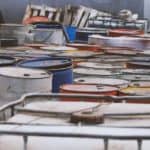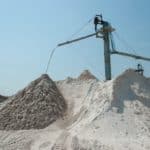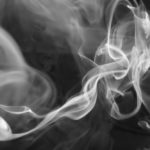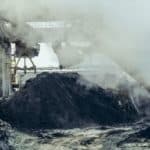Safety Program Auditing Services
INSIGHT INTO SAFETY PROGRAM AUDITING SERVICES
Complying with OSHA’s many regulations can be a daunting task, and often it is good practice to have an independent party perform a review of your programs to ensure there are no gaps or missing information that could compromise worker safety or result in citation. Insight IH Consulting is up to the task, and can assist you with your compliance efforts.
OSHA Standards
When performing an audit, we will reference a number of applicable OSHA standards that apply to most industrial facilities. These standards include the following:
1. 1910 Subpart D – Walking-Working Surfaces
This subpart covers ladders, step bolts and manhole steps, stairways, dockboards, scaffolds, fall protection equipment, and falling object protection.
2. 1910 Subpart E – Means of Egress
The subpart regulates exit routes, emergency action plans, and fire prevention plans.
3. 1910 Subpart F – Powered Platforms, Manlifts, and Vehicle-Mounted Work Platforms
This subpart regulates powered platforms for building maintenance, vehicle-mounted elevated and rotating work platforms, and manlifts.
4. 1910 Subpart G – Occupational Health and Environmental Control
This subpart covers ventilation, occupational noise exposure, and nonionizing radiation.
5. 1910 Subpart H – Hazardous Materials
This subpart regulates compressed gases, flammable liquids, combustible materials, explosives and blasting agents, anhydrous ammonia, liquefied petroleum gases, process safety management, hazardous waste operations and emergency response, and dipping and coating operations.
6. 1910 Subpart I – Personal Protective Equipment
This subpart details the requirements for personal protective equipment (PPE) including eye/face, respiratory, head, foot, and hand. It also covers electrical protective equipment and personal fall protection systems.
7. 1910 Subpart J – General Environmental Controls
This subpart regulates sanitation, safety color codes for marking physical hazards, accident prevention signs and tags, permit-required confined spaces, and lockout/tagout (LOTO).
8. 1910 Subpart K – Medical and First Aid
This subpart regulates medical services and first aid.
9. 1910 Subpart L – Fire Protection
This subpart regulates fire brigades, portable fire extinguishers, sprinkler systems, fixed extinguishing systems, fire detection, and alarm systems.
10. 1910 Subpart M – Compressed Gas and Compressed Air Equipment
This subpart regulates compressed air equipment including air receivers.
11. 1910 Subpart N – Materials Handling and Storage
This subpart details requirements for handling materials. This includes powered industrial trucks, overhead and gantry cranes, crawler locomotive and gantry cranes, derricks, helicopters, and slings.
12. 1910 Subpart O – Machinery and Machine Guarding
This subpart details general guarding requirements for machines, notably woodworking, cooperage, abrasive wheels, mills, mechanical power presses, forging machines, and mechanical power-transmission apparatus.
13. 1910 Subpart P – Hand and Portable Powered Tools and Other Hand-Held Equipment
This subpart defines general requirements for hand and portable powered tools including guarding.
14. 1910 Subpart Q – Welding, Cutting, and Brazing
This subpart details general requirements of hot work, including oxygen-fuel gas welding and cutting, arc welding and cutting, and resistance welding.
15. 1910 Subpart R – Special Industries
This subpart provides additional regulation for select industries. These include pulp and paper mills, textiles, bakery equipment, laundry machinery and operations, sawmills, logging operations, telecommunications, electric power generation/transmission/distribution, and grain handling facilities.
16. 1910 Subpart S – Electrical
This subpart covers electrical systems, which includes wiring design and protection, wiring methods, hazardous locations, and specific purpose equipment and installations.
17. 1910 Subpart T – Commercial Diving Operations
This subpart details the requirements associated with Commercial Diving, including specific procedures, safe practices, and equipment.
18. 1910 Subpart Z – Toxic and Hazardous Substances
This subpart contains the Z-tables that define the permissible exposure limits (PELs) enforced by OSHA. Also detailed are the various standard chemicals (respirable crystalline silica, methylene chloride, cadmium, lead, formaldehyde, hexavalent chromium, beryllium, benzene, and others. This portion of the standard also includes ionizing radiation, hazard communication, and laboratories. Insight IH Consulting is well-versed in industrial hygiene sampling, and can not only review your existing industrial hygiene program, but can also provide services to quantify the exposures present within facilities.
Insight IH Consulting has 13+ years experience working with safety programs at a variety client sites. Eric Pylkas is a Certified Safety Professional (CSP) that is familiar with a multitude of industries, and has experience in Safety Program Auditing for manufacturing facilities and laboratories.
Call 262-347-6599 for assistance now.
Recent Posts
 The Science of Taste: Industrial Hygiene and Food FlavoringsFebruary 20, 2019
The Science of Taste: Industrial Hygiene and Food FlavoringsFebruary 20, 2019 Industrial Hygiene Misconceptions #4 – Are You Sure Your Real-time Respirable Silica Correction Factor is Correct?September 11, 2018
Industrial Hygiene Misconceptions #4 – Are You Sure Your Real-time Respirable Silica Correction Factor is Correct?September 11, 2018 Industrial Hygiene Misconceptions #3 – PIDs: Lamps and Response and Electron Volts…Oh My!June 15, 2018
Industrial Hygiene Misconceptions #3 – PIDs: Lamps and Response and Electron Volts…Oh My!June 15, 2018 Beyond Sand and Stone – 10 Surprising Sources of Potential Respirable Crystalline Silica ExposureJune 6, 2018
Beyond Sand and Stone – 10 Surprising Sources of Potential Respirable Crystalline Silica ExposureJune 6, 2018 Industrial Hygiene Misconceptions #2 – Carbon Monoxide in All the Wrong PlacesMay 31, 2018
Industrial Hygiene Misconceptions #2 – Carbon Monoxide in All the Wrong PlacesMay 31, 2018 Industrial Hygiene Misconceptions #1 – The Misnomer of “Total Dust”May 24, 2018
Industrial Hygiene Misconceptions #1 – The Misnomer of “Total Dust”May 24, 2018
